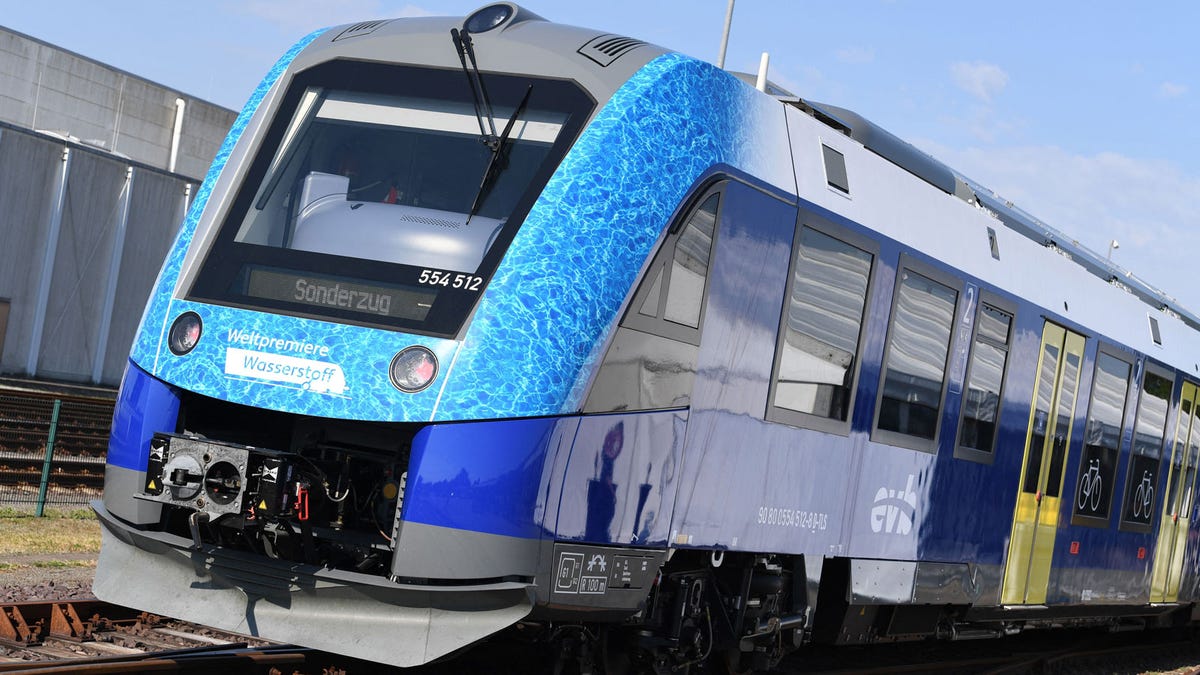Germany Now Has the World’s First Fleet of Hydrogen Trains

The hydrogen trains will cut 460 tons of CO2 emissions each year. Photo: Carmen Jaspersen / AFP (Getty Images)
You wait decades for a hydrogen-powered train to come, and then 14 arrive all at once. At least, that’s how commuters in the German region of Lower Saxony might feel after the world’s first fleet of hydrogen trains launched in the state.
According to the Associated Press, the state of Lower Saxony, which includes cities such as Bremen and Hanover, has launched a fleet of 14 hydrogen fuel cell trains, which will replace its aging diesel locomotives. The project is thought to be a world first. AP reports:
“The 14 trains use hydrogen fuel cells to generate electricity that powers the engines. The German government has backed expanding the use of hydrogen as a clean alternative to fossil fuels.
“State governor Stephan Weil said the 93-million-euro ($92 million) project was an “excellent example” for Lower Saxony’s efforts to make its economy greener.”
When I grow up, I want to be a hydrogen train driver. Photo: Carmen Jaspersen / AFP (Getty Images)
The new trains will serve routes between the northern towns of Cuxhaven, Bremerhaven, Bremervoerde and Buxtehude where they will be operated by regional rail company LNVG.
G/O Media may get a commission
ThisWorx Cordless Car Vacuum
Suck it up
Only 2.4 pounds, has a 60w motor for powerful suction, has a lithium battery that can store charge for up to 18 months, which means you can leave it in the car, and it even comes with different heads for different uses as well.
The new trains in the fleet are Coradia iLint trains produced by French company Alstom. According to the manufacturer, each will have a range of up to 621 miles and a maximum speed of 87 mph.
By running on hydrogen instead of diesel, Alstom claims that the new trees will save more than 422,000 gallons of fuel each year. Roughly 22 pounds of CO2 are released by burning a single gallon of diesel, meaning the new trains could cut more than 460 tons of CO2 emissions from the rail network every year.
At present, the hydrogen used to power the trains will be produced as a byproduct in chemical processes. But, German energy company Linde said it hopes to be producing a steady stream of hydrogen using only renewable energy “within three years.”
The new trains aren’t the first hydrogen-powered models to hit the track. The very first hydrogen trains went into service in 2018, but this is the first time an entire fleet of locomotives has been switched for cleaner alternatives.



